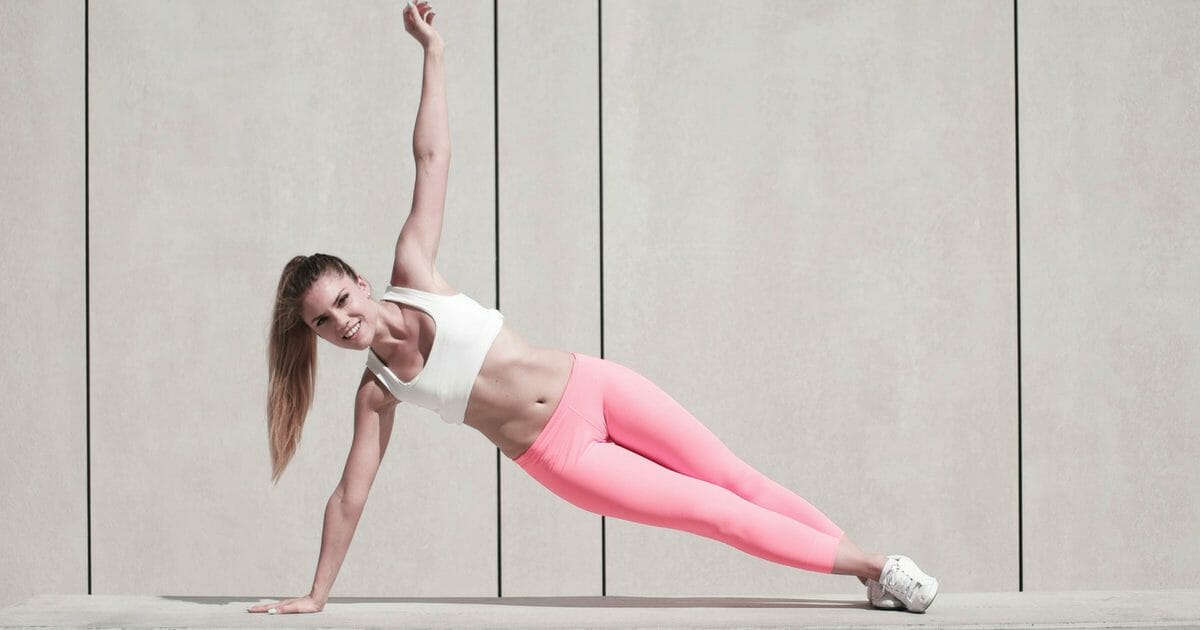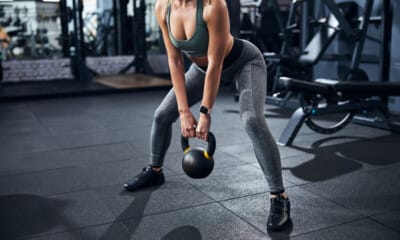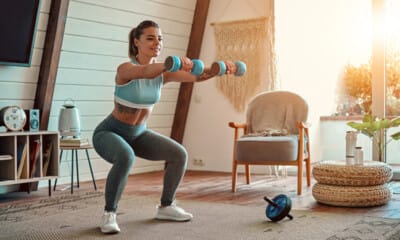Get LIIT: Workout That Torches Calories Like HIIT
Everyone knows regular exercise will be the elixir to a lengthy life. However, not all people prefer to invest hours upon hours in the gym. A number of us don’t even like to crack a sweat. The great news is the low intensity interval training, or LIIT, is the secret to success.
Low Intensity Interval Training workouts have emerged from the shadow of the more spirited sister, high-intensity interval training (HIIT). Fundamentally, while the HIIT sister is running and then jogging, the LIIT sister is running and then walking. But in the end of the day, the outcomes will be the same.For time-averse exercisers, HIIT is your thing to do. Yet, others may like slow, low-impact workouts which take a bit more time. Like most of LIIT work outs, all you will need is a pulse and a willingness to stick to it.
The same as HIIT workout routines, LIIT delivers cardiovascular benefits, enhanced mobility, and improved strength and endurance. What’s more, LIIT can help relieve pain and alleviate depression. LIIT workouts are also easy to produce and plan. Should you need help getting started, we’ve got a fantastic sample LIIT workout below.You are going to find wonderful benefits in both HIIT and LIIT routines. Generally, you want to figure out what works for you. Whether you shake your booty slow or fast is your decision!
What is Low Intensity Interval Training?

LIIT workouts are a great alternative to fast and strenuous exercise. LIIT still makes you work but at a slower pace. While HIIT burns calories in half the time, a LIIT workout can produce the same fat-busting results with less intensity.[1]
LIIT is similar to HIIT in that you will still exercise in intervals. Though LIIT still has periods of intensity, they aren’t as intense as HIIT workouts. In addition, the recovery periods for LIIT workouts are also longer. As a result, many women prefer this gentler method of exercise. LIIT could also be an option for days you have period pains but know you need to get up and move about anyway.
The intensity of HIIT workouts makes it hard for most people to jump straight into it without any prior conditioning. Therefore, the milder demands of LIIT make it an excellent alternative for women of any fitness level. If you’ve not worked out for a period of time, or you’re just bouncing back from an injury, LIIT could be a great way to get exercising again. Because the exercises are gentler and the recovery period of a LIIT workout is slower-paced, low intensity interval training reduces the risk of injuries.[2]
In general, the slow-tempo movements ensure proper body positioning. This makes LIIT workouts more sustainable.[3] As a result, you will also be more likely to be consistent in your workout routine long-term. LIIT is also perfect for a quick at home workout.
Even if you are a fan of HIIT exercises, you can work on low intensity interval training on your off days. This will offer you a break from your normal routine while still giving your body a good workout. With LIIT, you get the same calorie burn without the burnout.
How Do LIIT Workouts Work?
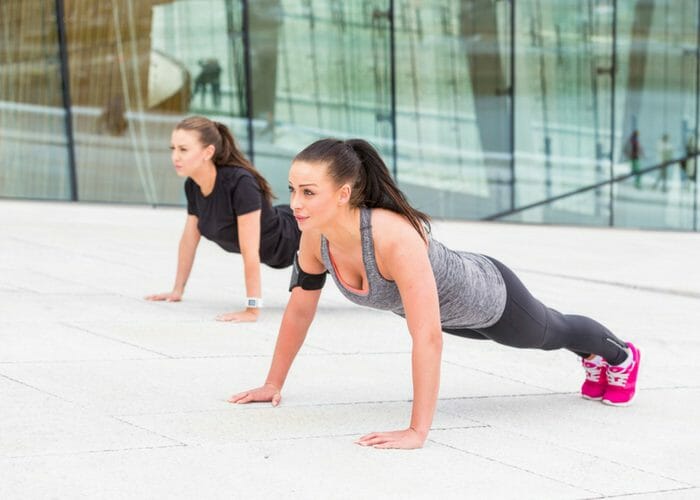
You don’t have to huff and puff to get healthy and feel good. Any form of physical activity can produce health benefits such as reduced body fat, improved heart health, and reduced risk for depression and anxiety.[4]
A low intensity interval training workout embodies many of the same techniques as a high intensity workout. A LIIT workout is great for beginners or those returning from an exercise break. Similarly, LIIT is wonderful for anyone who is physically restricted. Always make sure you get the okay from your doctor to start working out.
HIIT is a lot like LIIT, but new exercises can be intimidating. On the positive side, the basic idea is the same. LIIT workouts are slow-and-steady exercises. You’ll do strength training on a muscle group and then take a break. Unlike HIIT, your rest period is much longer. For example, you can do ten bicep curls and then rest for three minutes. With this quick at home workout, slow and steady wins the race.
Ideal LIIT workouts can be brisk walking, jumping rope, dancing, playing soccer, lifting weights, and even doing yoga. Remember this also depends on your fitness level. If jumping rope or dancing feels like you are doing a high intensity workout, move on to something gentler. You are still going to gain fitness, just perhaps at a slower pace.
The Benefits of Low Intensity Interval Training Workouts
Now that you know what LIIT is and how it works, let’s take a look at some of the benefits this workout can bring you:
1. LIIT improves mental health
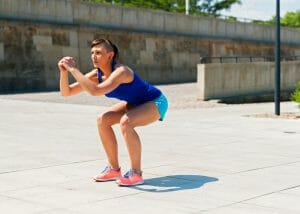
In 2015, scientists collected studies on low intensity workouts for older adults. Of the 15 studies, 11 reported improvements in cognitive function and depressive symptoms.[5] It has been scientifically proven that exercise improves mental health.[6]
2. LIIT is self-care
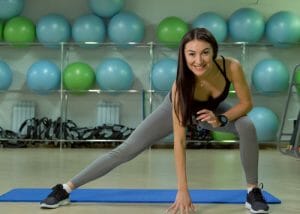
Not only can moderate amounts of exercise improve your health, but it can also help you reboot after a stressful week. A LIIT workout is unhurried and thoughtful. With this in mind, it is the perfect at home circuit workout to calm the mind and re-center yourself.
3. LIIT can help prevent cardiovascular disease
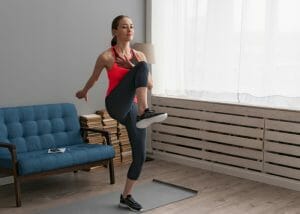
A study by the Cardiff School of Health Sciences has shown that following a LIIT workout program can help prevent cardiovascular disease.[7] CVD is the leading cause of death for women in the United States. In fact, nearly one in three women die from CVD.[8] That is a very scary fact, however, low intensity interval training could be the perfect preventive measure.
4. LIIT can help regulate hormones

LIIT can help correct hormonal imbalances and control your appetite with a quick at home workout. Although this 2009 study was conducted with male participants, the results are quite fascinating. Scientists have proven that one hour of low intensity cardio helped the body decrease the release of the hormone that promotes hunger.[9]
5. LIIT can help ease chronic pain

If you suffer from painful conditions like fibromyalgia, back pain, or arthritis, exercise can help ease the pain.[10] You can achieve these results with gentle low intensity interval training in combination with exercises like yoga, pilates, or tai chi.
The Benefits of HIIT vs. LIIT
Here’s a quick summary of some of the differences and benefits of HIIT vs. LIIT:
The benefits of HIIT
- Burns significant calories[11]
- Quicker workout
- Faster weight loss[12]
- Can lower blood pressure
The benefits of LIIT
- Easier exercise for beginners
- Appetite control
- Easier to incorporate into everyday living
- Perfect for rest days
- Easily sustainable
The benefits of both
- Improves mental health
- Improves mood
- Helps weight loss
- Easy and quick at home workout
- No gym or equipment required
How to Use LIIT for a Quick At Home Workout
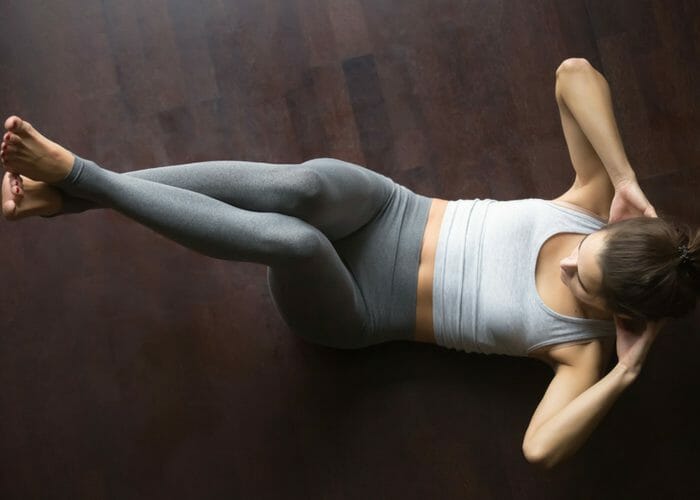
LIIT can be used as a quick at home workout any time of day. Floor space is all that’s required for an easy workout at home. Of course, if you have dumbbells or resistance bands, they can be used with the LIIT routines. You can also go online. The internet is chock full of LIIT workouts for all ages, sizes, and fitness levels.
This is an example LIIT exercise that you can do easily at home:
The Soup Squat
- Find a comfortable place in your home or outside for this exercise. You can even stand in front of your TV.
- Grab a can of soup (or a dumbbell if you have one) and hold the can in both hands.
- Stand with your feet a little farther apart than shoulder-width. Your toes should point out slightly.
- Keeping your torso as straight as possible (pretend there is an invisible string running out the top of your head that is connected to the ceiling) and bend your knees.
- Lower your body as far as you can while holding the soup can in front of your body with both hands. If you can only go down a teeny tiny bit at first, don’t worry. Honor what your body does and does not allow.
- Hold for three seconds, then push back up.
- Do ten more squats.
- Rest for two minutes.
- Do ten more squats.
- Repeat for as long as you want.
One thing to remember is that you can replace the squat with any low intensity strength training movement. You can even mix and match, varying the exercise at each interval. Furthermore, if you have equipment at home, you can use that too.

To shake things up a bit, you can also try doing a LIIT circuit workout to get the blood flowing a bit more. Here’s a workout you can try at home:
LIIT At Home Circuit Workout | 60 minutes
- Give your muscles a two-minute warm up by doing a quick jog.
- March in place vigorously for 90 seconds.
- Slow back down and march in place at a leisurely pace for two minutes.
- Do windmill steps for 90 seconds.
- Slow down and march in place at a leisurely pace for two minutes.
- Do push ups for 30 seconds.
- March in place at a leisurely pace for two minutes.
- Do no-jump squats for 90 seconds.
- Time to march in place at a leisurely pace for two minutes.
- Get down on the ground and do a 60 second plank.
- March in place for two minutes.
- Do push ups for 30 seconds.
- March in place for two minutes.
- Tackle those three-point balance moves for 90 seconds.
- March in place for two minutes (we want to keep the body moving throughout the whole routine).
- Do slow burpees for 90 seconds.
- March in place for two minutes.
- You have completed one full circuit.
- Complete one more circuit.
- With a five-minute cool down, this LIIT exercise routine should take approximately an hour to complete.
As always, learn to monitor your heart rate. A good way to measure is to subtract your age from 220. For example, if you are 40 years old, you’ll subtract 40 from 220, which equals 180. Your maximum heart rate is 180 beats per minute. Lower effort at a slower pace can still produce maximum results with LIIT.
Customize Your Own LIIT Circuit Workout
Once you get the hang of things, you might want to create your own program to keep your workouts interesting. Here are some steps you can use to customize your LIIT circuit workouts:
1. Set aside at least one hour for your LIIT routine.
While HIIT workouts typically last 15 to 30 minutes, an LIIT workout is done at a lower level of intensity over a longer period of time. Give yourself an hour to do the workout and adjust from there, if needed.
2. Choose five exercises you want to include in your circuit workout.
Here are eight example exercises to get you started:
- March in place
Walk in place vigorously, lifting your knees and pumping your arms. - No-jump squats
With your feet shoulder-width apart, lower yourself into a squat. Your knees should never extend over your toes. Your arms should be down at your sides. Now, come up from the squat swiftly and reach toward the sky. No jumping necessary! - Standing knee-to-elbow
Stand with your legs slightly wider than shoulder-width. With your toe pointed out, lift your right leg. Lower your right arm at the same time so that you touch your elbow to your knee. Alternate legs and arms. - Slow burpees
Position yourself in a push-up position. Move your legs toward your chest, alternating left and right, moving in a slow but controlled manner. - Three-point balance
Stand tall with your hands on your hips. Keeping your left foot on the floor, lift your right foot. Extend your right leg out in front of you, then to the side, then to the back. Switch legs and repeat. - High knee pull down
Stand with your feet shoulder-width apart and stick your arms straight above your head. Raise one knee at a time up so it is above your belly button. At the same time lower your arms as if you are holding an invisible barbell. - Side step and touch
Stand tall with your hands on your hips. Relax your shoulders. Take a deep breath and step to one side, then close your feet together so they touch. Repeat on the other side. - Windmill steps
For this move, do the side step and touch exercise but tap your foot behind you and swing the opposite arm in a large circular motion. Alternate feet and arms.
3. Exercise for 60 seconds. Then, recover for two minutes.
You should perform each exercise for 60 seconds. If 60 seconds is too long, or not long enough, adjust accordingly. You should then take a two-minute recovery period before moving onto the next exercise. During your recovery periods, try to keep moving instead of just standing still. Completing five of these exercises (including the resting periods) is one full circuit.
4. Complete 4 circuits.
If you’re just starting out, aim to complete 4 circuits in 1 workout session. This should take you about an hour. As you build up your fitness levels, you may want to increase the number of circuits.
5. Warm up and cool down.
Remember to include a quick warm up and cool down before and after exercises to minimize injuries. These don’t have to be as long as the warm up for a HIIT workout, 1-2 minutes will do.
Conclusion
The most important thing to remember is that no matter where you are in your exercise journey, you can find a low intensity workout that you can do. Although both forms of exercise are beneficial, your movements don’t have to be intense at all. With this in mind, try not to get caught up in the details and just start moving. You don’t need fancy equipment or a gym membership to create your own LIIT workout. Consistent movement of any kind if the key to living a long and healthy life.
Read Also: Why You Should Start To Eat Protein Bread?


